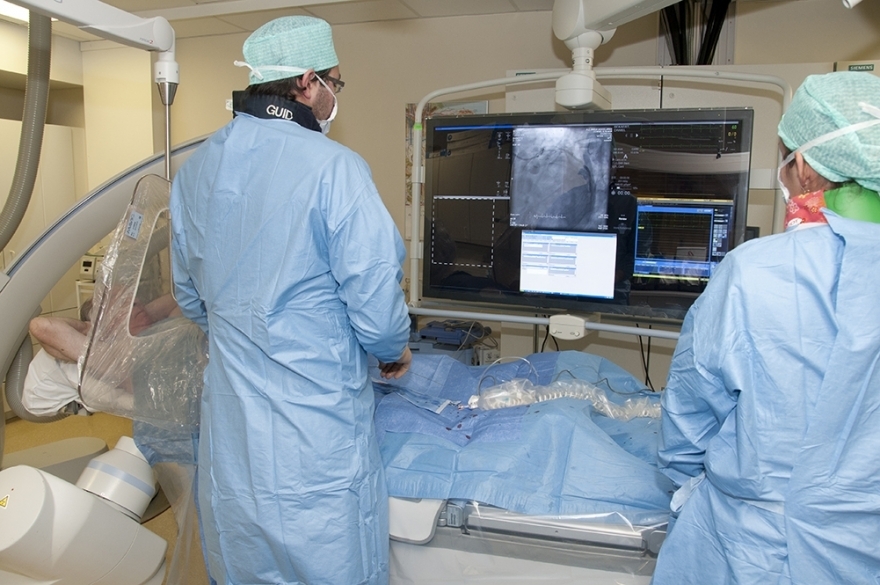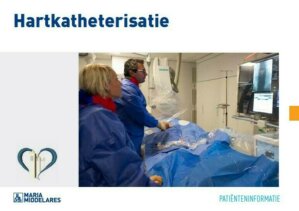Diagnostic cardiac catheterisation
What is it?
What is it?By threading catheters through the arteries to the heart, the physician can view the coronary arteries using a contrast agent and X-rays. This makes it possible to study the blood flow through the coronary arteries. Poor blood flow causes a low oxygen level in the heart.
A diagnostic cardiac catheterisation is performed when coronary diseaseis suspected.
What is the process?
What is the process?Preparation
Urgent testing
If you are admitted with acute heart symptoms, you will be referred for cardiac catheterisation as soon as possible. In order to perform the test as soon as possible, the cardiologist and the nursing team provide 24/7 on-call cover.
Scheduled testing
The cardiac catheterisation can also be performed as a scheduled procedure, rather than on an emergent basis, if there are no acute coronary symptoms (angina pectoris).
- You will be admitted to the Hospitalisation Ward. The physician will tell you beforehand whether you need to be fasting for the examination. Medication from home may be taken with a small sip of water.
- Your physician will tell you which medication you may take prior to the procedure.
- If no recent laboratory results are available, blood samples may be drawn.
- You will be given a surgical gown to wear. Shortly before the procedure, you can be provided with a tablet to help you relax. The nurse will place an IV line in your arm for the administration of medication, should that be necessary.
- The procedure is performed in the cardiac catheterisation room.
Test
You lay down on the examination table. Adhesive electrodes are placed to monitor your heart rhythm. Under a local anaesthetic, a thin tube (≤ 2 mm) is placed in the artery in the groin, wrist or inside of the elbow. Through this tube, different catheters are threaded to near the heart to insert contrast agent directly into the coronary arteries. This contrast agent will be made visible on the screen using X-rays.
Aftercare
If the test was performed with an access site in the groin, you will need to stay in bed until the next day.

What are the risks?
What are the risks?Allergic reactions to the contrast may occur in very rare cases. The staff and the cardiologist are trained to recognise this reaction, in the rare event that it does occur. They have the necessary medication and devices needed to counteract this side effect.
Results
ResultsIf signficant constrictions in the coronary arteries are confirmed, the number of constrictions, their location, the severity and the patient's general condition determine which treatment is chosen. The coronary arteries are usually opened with a balloon or stent during the procedure. In some cases, a bypass operation is required. Referral to the Cardiac Surgery Department is discussed daily with the heart surgeons.
In some cases, only treatment with medications will be started.
Leaflet
LeafletSee the leaflet below for more information.
Only available in Dutch:

Hartkatheterisatie
DownloadCentres and specialist areas
Centres and specialist areas
Latest publication date: 16/05/2024
Supervising author: Dr Provenier Frank




